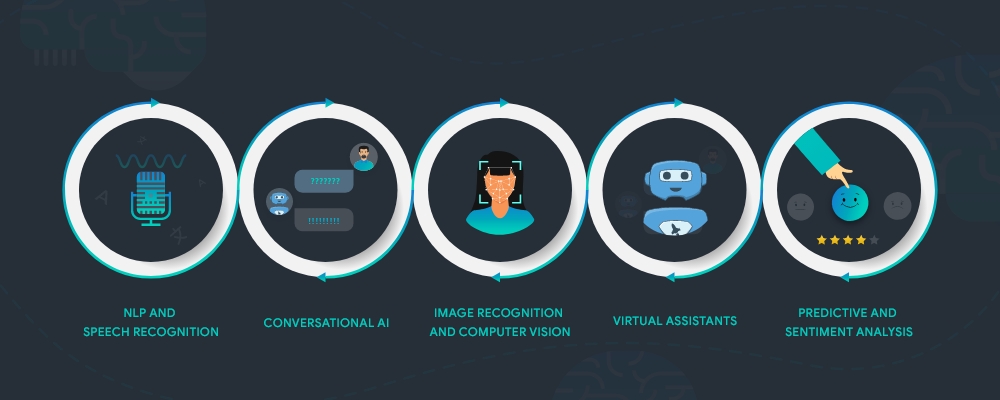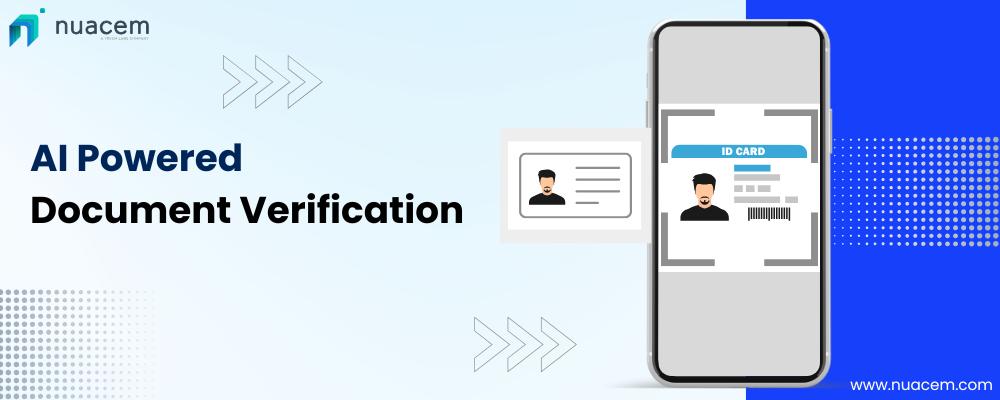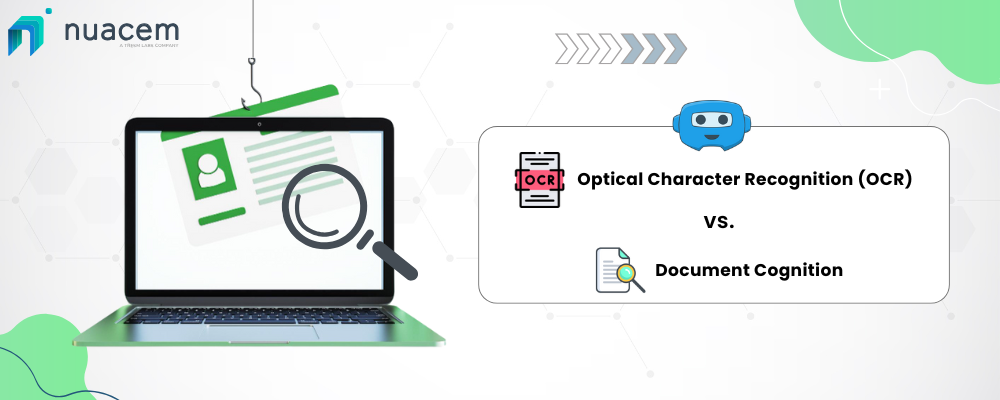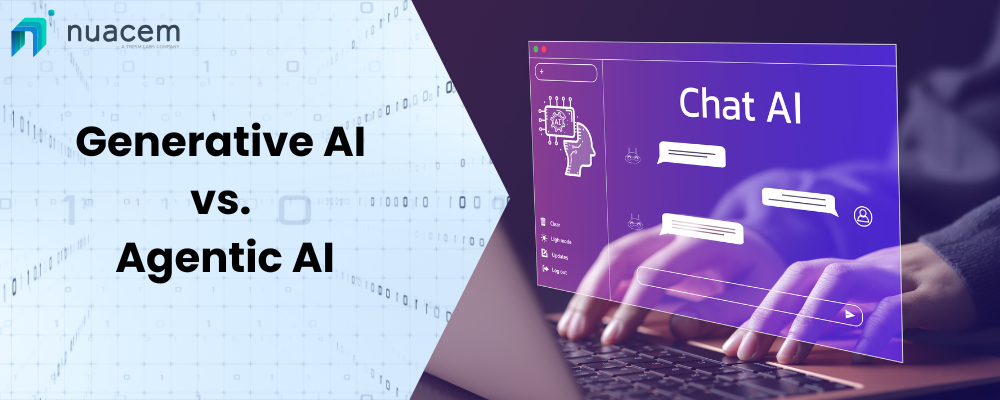It is nearly not viable to overlook the hype about Artificial Intelligence and its potential to impact enterprise performance.
Apart from the optimism about AI potential, every industry enterprise integrates the technology to enhance in various ways.
We are in search of the best use of the technology to sail within the chaotic marketplace.
When AI came into the limelight, many people thought that Pure AI technology has superior or equal cognitive capabilities like humans who developed it.
Machine learning, cloud computing, neural networks, virtual assistants, Chatbots, deep learning, and Natural language processing are the hot topics being picked up by the boardrooms to find the optimal or right solution.
The main motive of AI and automation in enterprises is to streamline processes to minimize costs and maximize the customer experience, customer engagement, and profit.
All the above results can be seen within 1-2 years using AI by hitting the mainstream
But, when we look into reality, we are unable to see good results.
“58% of enterprises are researching AI, while only 12% are using a model.” [Source:Forrester ]
To be surprised, making a machine speak like a human is still too demanding for even Google to do at their best.
It can be one of the reasons Pure AI has failed to make its mark on the organizations.
Enterprises are expecting AI to be actionable, tactical, and useful in managing or automating particular tasks.
And mainly, there requirements to be an absolute path to ROI.
Pragmatic Artificial intelligence enters the main scene, a different form of AI that is discreetly delivering paybacks today.
Continue your walk with us for more information on Pragmatic AI.
What exactly is Pragmatic AI?
From the name only, you can know that Pragmatic AI is a practical application of AI to carry out unambiguous errands and business processes.
Pragmatic AI is not one technology; it is a combination of one or more building block technologies. When these technologies work collectively, they are advanced enough to add intelligence to apps and provide significant business value.
Pragmatic AI mainly refers to practical applications as divergent to theoretical ones that require a human help out to learn and become accustomed according to business confrontations.
Pragmatic AI is pre-programmed with the business’s active bunch of processes, to make it serviceable from launch.
Pragmatic AI is being used in many sectors worldwide to help call centers provide better customer experience and engagement, improve patient engagement, predict defects in medical products before they get into the market, and many more.
It is also helping humans to achieve an exceptional level of yield and effectiveness.
Without our knowledge, we are using pragmatic AI in our day to day life.
Now, let us dive into deep to gain knowledge on Five categories of pragmatic AI and ways they are and can be used in the businesses.
Five ways pragmatic AI is used
NLP and speech recognition
Natural language processing tools provide individuals with an opportunity to interact with the computer, or you can say Chatbots with the use of simple human interactions.
These help users find near banks or shopping malls, and it also provides directions to a particular destination.
These tools help customers to process their work efficiently and quickly without depending on a human.
The NLP technology uses speech recognition technology to understand human voice commands, and it can also construe a text sent to an organization through Facebook Messenger.
It can pinpoint small talk and crucial points such as location, time, date, and mobile number.
Nuacem’s NLP and speech recognition technology helps enterprises to stay connected with customers, make them feel as they are interacting with the human agent.
Conversational AI
Conversational AI is changing every facet of when, where, and how you slot in and converse with your customers.
It refers to the utilization of messaging apps, voice assistants, and Chatbots as most customers are younger generations. They are interested in messaging platforms over the other modes of communication.
Conversational AI helps enterprises eliminate customer wait time by providing 24/7 service with personalization that helps enhance customer engagement, brand loyalty, and a decrease in cost.
Nuacem AI is offering top class Conversational AI services across the globe.
Image recognition and computer vision
With image recognition technology, AI algorithms can spot substances in seashore and vehicles on an artery.
This technology is helping in predicting the strength of oil and gas refineries, planning routes to decrease traffic congestion, and augmenting physicians’ work in diagnosing health issues or x-rays that require further examination.
Image recognition and computer vision help the computer observe, identify, and process images as humans and then provide apposite input.
Virtual assistants
Virtual assistants like Amazon Alexa, Apple Siri, Google Assistant, and many more are used to benefit the in-house team and customers.
These virtual assistants are mostly used in the retail industry. With the use of a digital assistant, transactions can be processed without ever leaving the messaging conversation.
It helps in automating the billing process in the businesses to streamline repetitive customer processes and interactions further.
Predictive and sentiment analysis
This type of machine learning AI is being used widely to help organizations to take advantage of the past to predict the upcoming instances or future.
By analyzing numerous amounts of data and identifying the models/patterns of behavior, enterprises can make better decisions.
Predictive analysis helps health service providers and patients predict their health situations based on their previous behavior patterns. And sentiment analysis mostly works much in the retail sector for product analytics and reputation management.
Challenges
The above are the various significant usages offered by pragmatic AI.
But, some challenges are holding back enterprises from embracing Pragmatic AI benefits; they are:
- Knowing where it is needed
- Make sure you have accurate data.
- Finding the right solution provider for the task
To face these challenges, enterprises should follow these initial steps, such as finding the right partner and set order in data.
Undeniably, today or in the future, humans and their knack to cause will be components of the AI workflow because the software doesn’t know as much as a human knows.
Leverage the benefits of Pragmatic AI with a complete package of Nuacem Pragmatic AI solutions.
Stay with us for more interesting updates on Conversational AI, Virtual Assistants, Pragmatic AI, and Automation.






